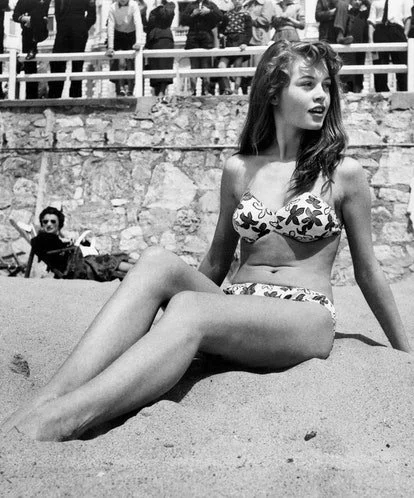An Itsy-Bitsy Dose of Bikini History
Bikini-like outfits can be traced back to ancient Rome, but by the 1940s, bikinis were in direct opposition to Western society's modest values. Bikinis became the scandalous topic of conversation on July 5, 1946, when French Engineer Louis Reard introduced the modern bikini on showgirl Micheline Bernardini in Paris, France. Bernardini was among the few women brave enough to show the necessary amount of skin that debuting the bikini required.
Named after Bikini Atoll, where post-World War 2 atomic bomb tests were taking place, the bikini initially had far more people who detested the modern look than those willing to try it. French women clambered, and the Catholic Church balked at the barely there thirty inches of fabric. It wasn't until the 1960s that bikinis became more widely accepted and flaunted on most beaches.
Public Outrage
The first ever Miss World Beauty pageant was in 1951, and the bikini proved to be a point of contingency. Ireland and Spain threatened to withdraw from the competition at the prospect of the women donning bikinis. In the end, every contestant wore a one-piece, except for Kiki Haakanson of Sweden, who was crowned Miss World 1951. She accepted her crown and title in a bikini with a cape draped around her shoulders. From this point on, winners wore one-piece bathing suits until evening gowns became the expected wear for the crowning ritual.
Some countries such as Spain and Italy would go so far as to pass legal measures prohibiting bikinis on public beaches. America, while often prudish, was forced to adapt the swimsuit style earlier than expected. Slowly making appearances throughout World War II, versions of the less risque 1940s silhouette would leak into American life due to fabric rationing. The bikini proved to be the perfect way to be a patriot, as the swimsuit's designs required less fabric.
Meanwhile, many actresses on the silver screen would make their case for the stomach-baring swimsuit. Brigitte Bardot became the leading proponent, drawing attention in a stunning white bikini during the Cannes Film Festival in 1953. Rita Hayworth, Ava Gardner, Raquel Welch, and Ursula Andress would also draw the attention of cameras and critics when wearing the newer swimsuit.
Growing Acceptance
As these vintage sex symbols began to wear the swimsuit more often, public interest significantly increased. Enamoring women in Western society, the bikini's popularity increased interest in services such as bikini waxing and sun tanning. This spike in interest was largely aided by the youthquake in the '60s, a movement that challenged "older" views on modesty.
Brian Hyland immortalized the swimsuit in the song "Itsy Bitsy Teenie Weenie Yellow Polka Dot Bikini" in 1960. The song was a commercial success and became a summertime favorite. With its consistent appearances, the bikini became less of a taboo and more of a staple of Western feminine independence.
By the ‘90s and early 2000s, two-piece sets had won their place in Western society, becoming as popular–if not more so–than the classically conservative one-pieces. Placed prominently in movies, television shows, and commercials, it was hard to shy away from the skin-baring summer staple. Due to this, the history of the ostracized bikini slowly faded into the woodwork. And thank goodness, because what would the season of the sun be without an itsy-bitsy bikini?




